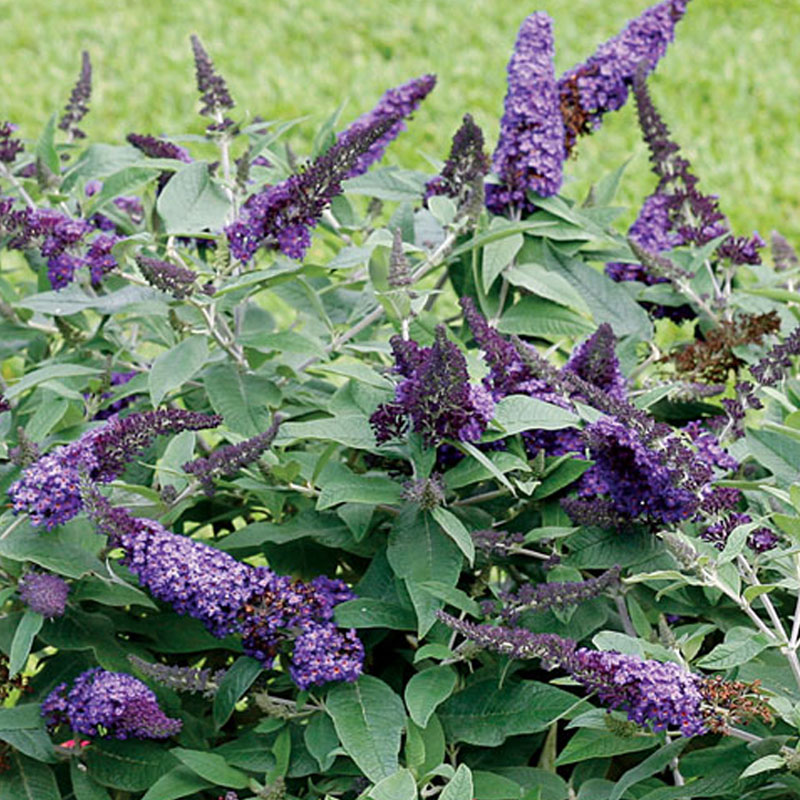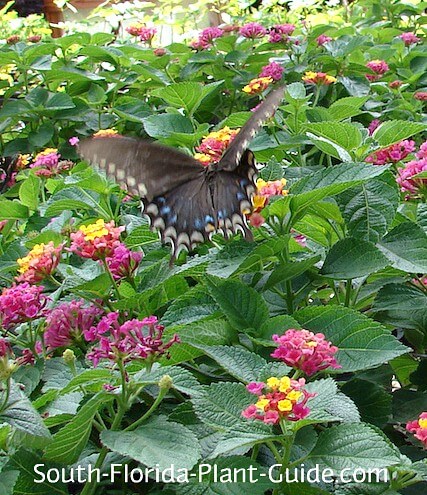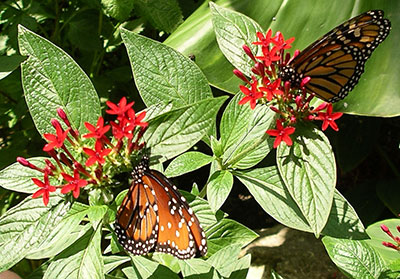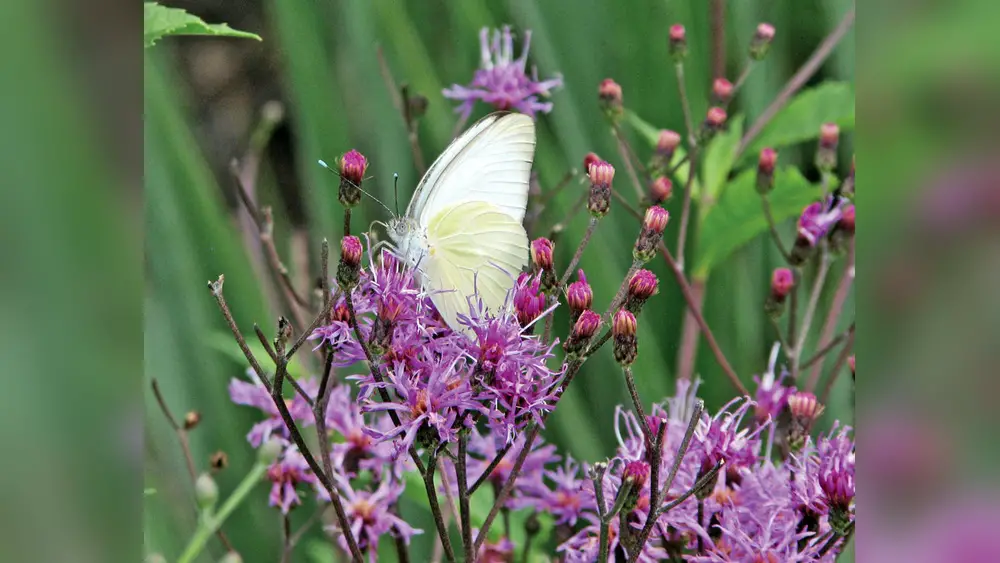Are you ready to transform your Florida garden into a vibrant butterfly haven? Choosing the right plants can make all the difference in attracting these beautiful pollinators right to your backyard.
But with so many options, which butterfly plants thrive best in Florida’s unique climate? In this guide, you’ll discover the top butterfly-friendly plants that not only add color and life to your garden but also support local butterfly populations. Whether you want to watch monarchs flutter by or create a peaceful outdoor retreat, these plants will help you create a flourishing butterfly paradise you’ll love.
Keep reading to find out which plants will make your garden the ultimate butterfly magnet!

Credit: verdego.com
Top Butterfly Plants For Florida Gardens
Florida gardens burst with color and life when butterfly-friendly plants thrive. Choosing the right plants invites many butterflies to your outdoor space. Native and well-adapted plants support local butterfly species effectively.
Below are top choices to help your garden attract and sustain butterflies all season long.
Swamp Milkweed Benefits
Swamp milkweed is a favorite among Florida butterflies. It blooms from late spring to early fall with bright pink flowers. This plant serves as a larval host for Monarch, Queen, and Soldier butterflies. Its nectar feeds many pollinators. Swamp milkweed thrives in moist areas, perfect for Florida’s wet climates. Planting it helps support butterfly populations and adds natural beauty to your garden.
Coreopsis Varieties
Coreopsis offers vibrant yellow blooms that attract butterflies easily. These hardy flowers flourish in Florida’s sunny gardens. Many varieties bloom from spring through fall, providing a long nectar source. Coreopsis plants are low maintenance and drought tolerant. Their cheerful flowers brighten spaces and support many butterfly species. These plants work well in beds, borders, and containers.
Wildflower Seed Mixes
Wildflower seed mixes bring diversity and color to butterfly gardens. These mixes often include native species suited for Florida’s soil and climate. Planting wildflowers creates a natural habitat that supports butterflies and other pollinators. They bloom at different times, ensuring continuous nectar supply. Wildflower gardens require minimal care once established. This option suits gardeners wanting a lively, varied butterfly-friendly space.
Native Flower Options
Choosing native flowers benefits both butterflies and the environment. Native plants are adapted to Florida’s conditions and local wildlife. Examples include passionflower, lantana, and mistflower. These plants provide food and shelter for butterfly larvae and adults. Native flowers often need less water and fertilizer. They blend well with natural landscapes and attract a wide range of butterfly species.

Credit: www.south-florida-plant-guide.com
Choosing Plants That Support Butterfly Life Cycles
Supporting butterfly life cycles means choosing the right plants. Butterflies need different plants for different life stages. Some plants serve as homes for their eggs and caterpillars. Others provide nectar for adult butterflies. Selecting plants that meet these needs helps butterflies thrive in your garden.
Host Plants Vs Nectar Plants
Host plants are where butterflies lay eggs and caterpillars feed. These plants provide food and shelter for young butterflies. Nectar plants offer flowers with sweet nectar. Adult butterflies use nectar plants for energy and survival. Both types of plants are essential for a healthy butterfly habitat.
Plants For Monarch Butterflies
Monarch butterflies depend on milkweed as their host plant. In Florida, swamp milkweed and tropical milkweed work well. These plants support monarch caterpillars from egg to butterfly. For nectar, plant flowers like lantana and coneflowers. These choices help monarchs complete their life cycle smoothly.
Supporting Caterpillars And Larvae
Caterpillars need safe places to grow and eat. Host plants with large leaves provide food and cover. Avoid using pesticides, which harm larvae and caterpillars. Planting a mix of host and nectar plants creates a welcoming space. This support increases butterfly survival and encourages more visits.
Growing Butterfly Bushes In Florida
Growing butterfly bushes in Florida offers a wonderful way to attract colorful butterflies to your garden. These plants thrive in Florida’s warm climate and provide nectar for many butterfly species. Butterfly bushes bloom from summer to fall, creating a vibrant display that brightens any outdoor space.
Proper care ensures healthy growth and abundant flowers. Choosing the right cultivars and managing pests helps maintain the bushes’ beauty. Whether planted in the ground or containers, butterfly bushes are a great addition for butterfly lovers.
Popular Butterfly Bush Cultivars
Florida gardeners enjoy several butterfly bush varieties suited to local conditions. ‘Miss Molly’ produces bright pink flowers that attract many butterflies. ‘Black Knight’ features deep purple blooms and grows well in full sun. ‘Miss Violet’ offers soft lavender flowers and is resistant to heat and humidity. ‘Pink Delight’ provides vibrant pink flowers and grows quickly. These cultivars flower profusely and tolerate Florida’s climate.
Container Growing Tips
Butterfly bushes grow well in containers, perfect for patios or small yards. Use pots with good drainage holes to prevent waterlogging. Choose a lightweight, well-draining soil mix for healthy roots. Place containers in full sun, as butterfly bushes need at least six hours daily. Water regularly but avoid soggy soil. Fertilize monthly during growing season with a balanced fertilizer. Prune in early spring to promote new blooms and maintain shape.
Managing Common Pests And Diseases
Butterfly bushes face pests like spider mites and aphids in Florida. Inspect plants regularly and spray with insecticidal soap if needed. Good airflow around plants reduces disease risks. Watch for powdery mildew, especially in humid conditions. Remove affected leaves promptly. Avoid overhead watering to keep foliage dry. Healthy plants resist pests and diseases better, so follow care tips closely.
Concerns About Butterfly Bushes
Butterfly bushes are popular for their bright flowers and ability to attract butterflies. Yet, they raise some concerns in Florida’s environment. These plants can affect local ecosystems in several ways.
Invasive Spread Risks
Butterfly bushes spread quickly in Florida’s warm climate. Their seeds travel easily by wind and water. This rapid spread can crowd out other plants. Many areas find it hard to control their growth once planted.
Impact On Native Plant Species
Butterfly bushes compete with Florida’s native plants for space and resources. They often dominate gardens and wild areas. This competition reduces native plant diversity. Losing native plants harms the natural balance of the ecosystem.
Effects On Local Butterfly Populations
Although butterfly bushes attract butterflies, they do not support all butterfly needs. Native plants provide food and shelter for caterpillars and butterflies. Butterfly bushes offer nectar but lack these essential benefits. This can harm local butterfly populations over time.
Creating A Butterfly-friendly Garden
Creating a butterfly-friendly garden in Florida brings vibrant color and life to any outdoor space. Butterflies need the right plants to feed and lay eggs. A garden designed with their needs in mind supports local butterfly populations. It also adds beauty and peacefulness to your yard. Planning your garden carefully helps attract many butterfly species throughout the year. Simple steps can create a welcoming habitat for these lovely insects.
Planting Design Ideas
Cluster plants with similar water and sun needs together. Use a mix of tall and low-growing flowers for variety. Create sunny spots with flat stones for butterflies to rest. Plant nectar-rich flowers in groups to draw more butterflies. Include host plants where butterflies can lay eggs safely. Avoid using pesticides that harm butterflies and caterpillars. Add a shallow water source like a birdbath with stones for landing. A natural garden feel invites butterflies to stay longer.
Seasonal Bloom Planning
Choose plants that bloom in different seasons to feed butterflies year-round. Spring blooms help butterflies after winter rest. Summer flowers provide nectar during peak butterfly activity. Fall blooms offer food before butterflies migrate or hibernate. Use native plants known to thrive in Florida’s climate. Plan a continuous bloom schedule to avoid food gaps. Deadhead old flowers to encourage new blooms. Seasonal planning keeps your garden lively and attractive to butterflies.
Attracting Diverse Butterfly Species
Plant a variety of flowers to attract many butterfly types. Include both nectar plants and host plants for caterpillars. Some butterflies prefer specific plants like swamp milkweed or lantana. Provide shelter with shrubs and small trees for protection. Avoid plants treated with chemicals that can harm insects. Mix native and butterfly-friendly exotic plants to support diversity. A diverse garden creates a balanced ecosystem for butterflies and other wildlife.
Where To Buy Butterfly Plants In Florida
Finding the best places to buy butterfly plants in Florida helps create a vibrant garden. Butterfly plants thrive in Florida’s warm climate. Choosing the right source ensures healthy plants that attract butterflies effectively. Explore several options to find quality plants near you or online.
Local Nurseries And Garden Centers
Local nurseries offer plants adapted to Florida’s climate. Staff can guide you on the best butterfly plants for your area. Visiting in person lets you inspect plant health before buying. Many nurseries carry native plants like swamp milkweed and passionflower. Support local businesses and get expert advice on planting.
Online Seed And Plant Sources
Online stores provide a wide variety of butterfly plants and seeds. Many specialize in native Florida plants important for butterflies. Buying online is convenient and gives access to rare species. Check delivery options and plant guarantees to ensure quality. Read reviews and choose trusted sellers for the best experience.
Choosing Healthy Plants
Healthy plants grow strong and attract more butterflies. Look for vibrant leaves without spots or discoloration. Avoid plants with pests or damaged stems. Check roots if possible; they should be firm and white. Choose plants that are well-watered but not soggy. Healthy plants adapt better and bloom beautifully in your garden.

Credit: gardeningsolutions.ifas.ufl.edu
Frequently Asked Questions
What Plant Attracts Butterflies In Florida?
Swamp milkweed (Asclepias perennis) attracts butterflies in Florida. It blooms from late spring to early fall. Monarch, Queen, and Soldier butterflies use it as a larval host plant. This native plant supports the full butterfly life cycle effectively.
Can Butterfly Bushes Be Planted In Fl?
Butterfly bushes can grow in Florida but often face rust, mites, and nematodes. Container planting improves their lifespan.
What Are The Disadvantages Of Butterfly Bushes?
Butterfly bushes spread aggressively, outcompete native plants, and disrupt ecosystems. They do not support caterpillars, limiting butterfly life cycles. Some cultivars are prone to rust, mites, and nematodes, reducing plant longevity, especially in Florida.
What Plant Attracts The Most Butterflies?
The butterfly bush (Buddleia) attracts the most butterflies with its vibrant, nectar-rich flowers. It blooms profusely and draws many species.
Conclusion
Choosing the right butterfly plants helps create a vibrant garden in Florida. Native plants like swamp milkweed support local butterflies well. They provide food and shelter from spring to fall. Avoid plants that struggle with Florida’s pests and diseases. Planting a variety ensures butterflies visit your garden often.
Enjoy watching these colorful insects flutter and feed daily. Your garden becomes a small, lively sanctuary for nature. Simple steps bring beauty and life to any outdoor space. Start planting today and see the difference soon.

